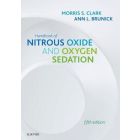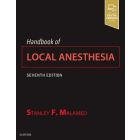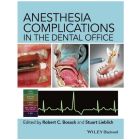Nitrous Oxide
One of the most common anaesthetics used in the dental industry these days, is Nitrous Oxide, or more commonly known as Happy Gas or Laughing Gas. First discovered by Joseph Priestly, an English scientist in 1793, it has been used for more than 150 years as the most widely used anaesthetic in both medical and dental applications.
Also known as Dinitrogen Oxide or Dinitrogen Monoxide, it is a small inorganic molecule having no colour and is a non-flammable gas having a slightly sweet odour. It is a chemical having several applications, and is used for non-medical purposes including the semi-conductor industry, food processing, and in the building of racing cars. Nitrous oxide however, also has some abuse potential and can be used for illicit recreational purposes.
In medical situations, it is usually administered by inhalation, and is absorbed by the lungs through the process of diffusion. This is then eliminated out of the body by respiration. The half-life for elimination for nitrous oxide is around 5 minutes. It is essentially unchanged when it is eliminated via the lungs i.e., it is non- metabolized and only less than 0.004% is metabolized by the system.
It is a weak anaesthetic and is usually used in combination with other agents. It can also be used as a carrier gas with oxygen and in combination with more potent gases that can be inhaled for surgical purposes as anaesthesia. In dentistry, it is found to be commonly used on its own as a single agent for partial sedation (with oxygen), more of them not is used in the pediatric dental customer base.
Nitrous oxide is used in dentistry extensively to reduce pain and anxiety associated with the dental procedures. The standard method of delivery is through the nasal mask, in combination with the supply of oxygen. The mask is specially fabricated to completely cover the nose and deliver the mixture of oxygen and nitrous oxide to flow, when the dentist works on the patient. Nitrous oxide is also administered by pediatric dentists commonly to increase relaxation, cooperation and analgesia, apart from inducing amnesia in the younger patients.
In adults, it can be used for prolonged dental practises, or even in the more involved procedures, apart from being used on patients from hyper responsive gag reflexes. It can also be used, additionally, in sigmoidoscopy, colonoscopy, laser procedures, ophthalmic procedures, emergency medical care for patients, and obstetrical labour pain apart from minor invasive medical procedures such as joint injections. Sometimes, it is even prescribed to patients having chronic pain due to terminal illnesses and pain from cancer therapies.
In children, nitrous oxide is used on children undergoing basic procedures including venous cannulation, dressing changes or even lumbar puncture, and this has shown a significant reduction in pain levels, thus enhancing shorter recovery. The children who had nitrous oxide administered also showed less anxiety and stress during the medical procedures. Less anxious children are managed better as they tend to cooperate more. Hence, nitrous oxide is a very important means of carrying out dental treatments in an effective and comfortable manner.



